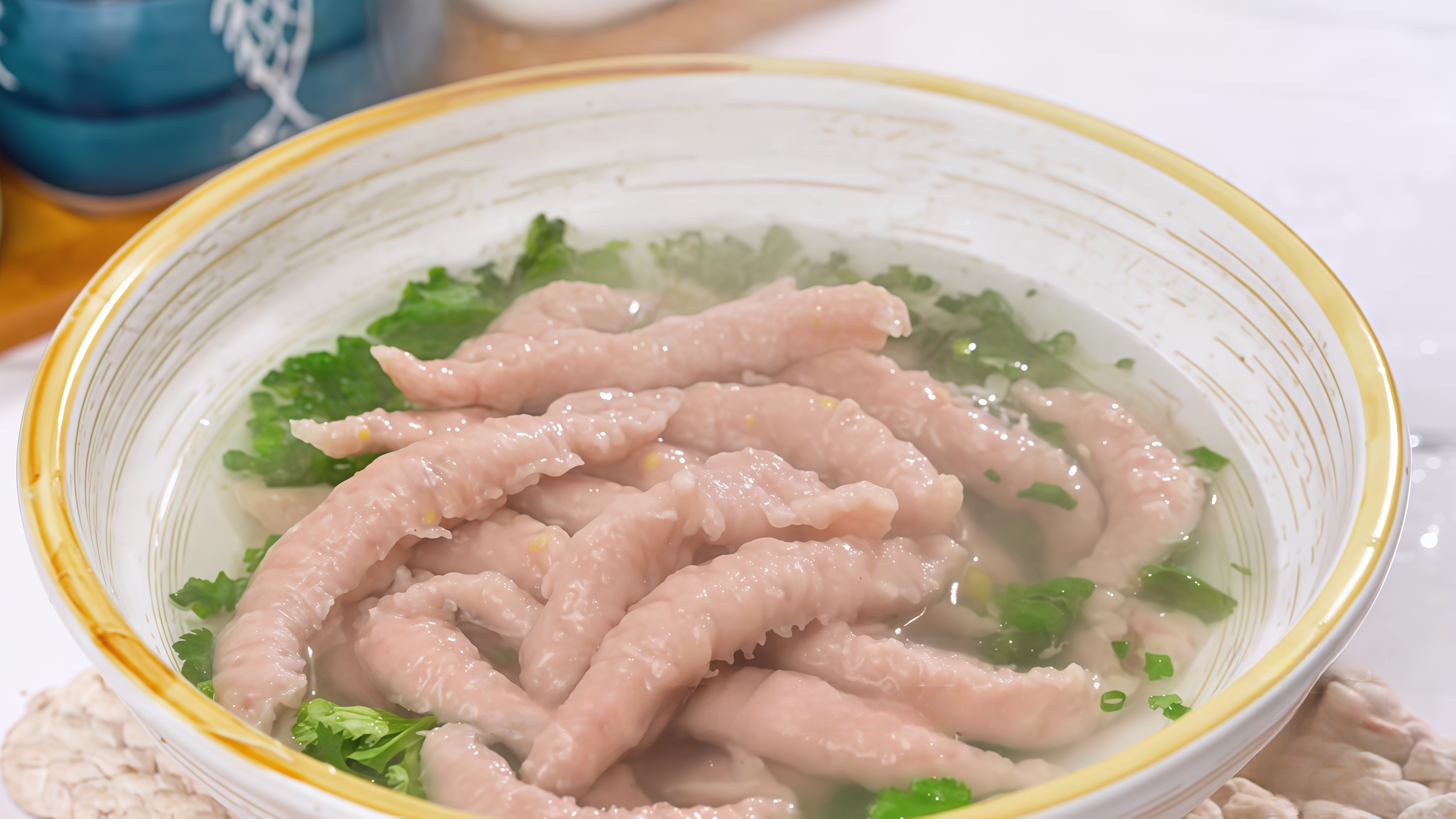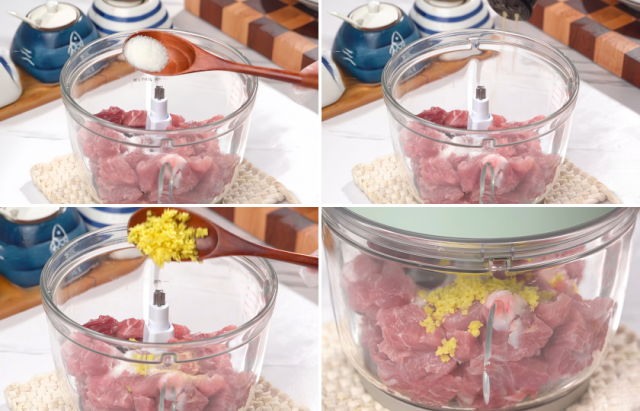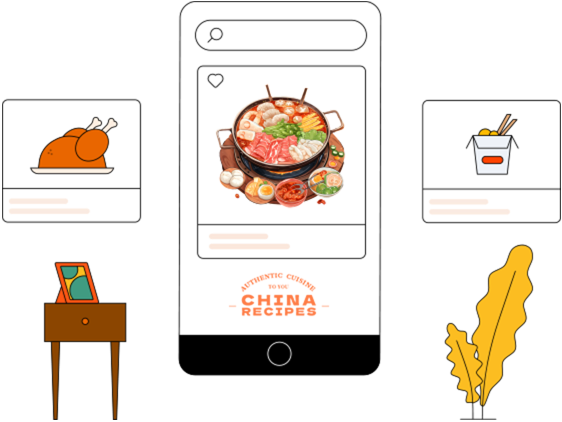Fuding Sliced Pork

Great Fuding sliced pork should be thin, tender, and flavorful. These seemingly simple requirements hide many skills. Come and learn from me!
What is Fuding Sliced Pork?
Fuding Sliced Pork is a signature snack in Fuding, Fujian. Despite its simple appearance, it involves delicate craftsmanship.
The pork from the pig's hind legs is minced into a paste, mixed with cassava starch, and then pounded repeatedly. Finally, it is scraped into strips and put into the pot to cook, resulting in tender, pink, and chewy slices.
The magic of this bowl of sliced pork lies in the fact that although it is made of meat, it tastes as smooth as seafood. Next time you visit Fujian, remember to squat on a small stool by the roadside, hold a bowl, blow the heat, and slurp it down. This is the authentic way to experience it.
Why do I like this recipe?
Unique texture: With the addition of cassava starch, the sliced pork tastes elastic, tender, and smooth, and has more chewiness than ordinary meatballs or slices of meat.
Simple to make: Although it requires whipping the minced meat, the overall steps are not complicated and can be easily completed in an ordinary kitchen.
Versatile soup base: It can be flavored with laver, pickled peppers, dried shrimps, etc., or adjusted according to personal preferences to vary the taste.
Healthy and affordable: Made with the pork from the pig's hind legs, it is more reassuring than store-bought meatballs. Moreover, you can control the seasoning when making it yourself, making it suitable for the whole family to enjoy.

Tools Needed
Basic Cutting Tools
Kitchen knife + Cutting board: Essential for mincing meat. A heavier knife blade is more labor-saving. If using a food processor to mince the meat, make sure to maintain a slightly granular texture and avoid turning it into a puree.
Mixing Containers
Large bowl (preferably deep): To prevent the minced meat from splashing during mixing. Glass or stainless steel materials are recommended as they make it easier to observe the state.
Mixing Tools
Chopsticks / Rolling pin: For manual stirring, a wooden rolling pin is recommended as it has a larger contact area and is more labor-saving. If you pursue efficiency, using a hand-held electric mixer (without hooks) at a low speed is easier for stirring.
Cooking Tools
Deep pot + Ladle: When cooking the sliced pork, there should be enough water. It is recommended that the diameter of the pot is over 20 cm. The ladle is used to skim off the floating foam or to check the doneness by tasting.
Flat plate / Cutting board: To spread the minced meat for scraping into strips. A ceramic plate is more non-stick than a wooden cutting board.
Measuring Tools
Measuring spoon / Kitchen scale: To accurately control the ratio of baking soda and cassava starch (too much baking soda will make it bitter).
Soup Base Containers
Wide-mouthed noodle bowl: With enough space to stir the soup ingredients. A ceramic bowl has better heat retention than a glass bowl.
INGREDIENTS
Main Ingredients
-
·500g of pork from the pig's hind legs (minced into a paste)
Additional Ingredients
-
·100g of cassava starch (sweet potato starch can also be used)
Seasonings
-
·2 tsp of salt (1 tsp for the minced meat, 1 tsp for the soup base)
-
·1.5 tsp of pepper powder (0.5 tsp for the minced meat, 1 tsp for the soup base)
-
·0.5 tsp of white sugar
-
·1 tsp of minced ginger
-
·120ml of clear water (added to the minced meat in three portions)
-
·0.5 tsp of baking soda (for the minced meat)
-
·10g of scallions
-
·5g of laver
-
·10g of coriander
-
·10g of dried shrimps
-
·5g of pickled peppers
COOKING STEP
Step 1
Mix the minced meat: Cut the pork from the pig's hind legs into small pieces. Put them into a meat grinder, add 1 tsp of salt, 0.5 tsp of pepper powder, 0.5 tsp of white sugar, and 1 tsp of minced ginger. Stir well.

Step 2
Add water and whisk: Add 120ml of clear water in three portions. Stir until each addition is absorbed. When adding the water for the third time, add 0.5 tsp of baking soda and continue to stir until the mixture is smooth and tender pink.

Step 3
Add starch and stir: Add 100g of cassava starch and whisk until it reaches a thick and stringy state.

Step 4
Shape and cook: Spread the minced meat evenly on a plate or cutting board. Add enough water to a pot and bring it to a boil. Then turn to low heat. Use chopsticks to slide the minced meat into the pot one by one.

Step 5
Cook the sliced pork: Cook the sliced pork in the pot for about 2 minutes. When all the slices float to the surface, they are cooked. Remove them and set aside.

Step 6
Prepare the soup base: Add scallions, laver, 1 tsp of salt, 1 tsp of pepper powder, coriander, dried shrimps, and pickled peppers to a bowl.

Step 7
Finish: Scoop the cooked sliced pork and the soup into the bowl, stir well, and then you can enjoy it.

More recipes worth trying
Lion's Head Meatballs with Crab Roe
Chinese Cooling Herbal Sweet Soup
Mistakes to Avoid
Insufficient Stirring of Minced Meat
If you don't add water in small portions or stir for too short a time when adding water, the minced meat won't absorb the water fully. The correct way is to stir the minced meat in the same direction until it becomes sticky after each addition of water. After adding baking soda for the third time, stir for 5 minutes until it can be drawn into strings.
Incorrect Ratio of Cassava Starch
If there is too much cassava starch, the sliced pork will be overly chewy (like rubber), while too little will make it crumbly and easy to break. The golden ratio is 100g of meat to 100g of starch. If you increase or decrease the amount of meat, the starch should be adjusted in a 1:1 ratio accordingly.
Improper Water Temperature Control
When putting the sliced pork into the pot, the water must be kept at a gentle simmer (about 90℃). A rolling boil over high heat will disperse the sliced pork. If the sliced pork spreads quickly when it enters the water, it means the water temperature is too high, and you should immediately turn down the heat.
Incorrect Shaping Technique
When using chopsticks to scrape the minced meat, keep the chopsticks at a 45-degree angle and quickly press gently to scrape out long, thin strips. If the sliced pork is too thick (over 0.5 cm), the center will be difficult to cook through, resulting in a tough texture.
Unbalanced Soup Base Seasoning
Soak the laver and dried shrimps in warm water for 5 seconds in advance (to remove sand and enhance the umami flavor). Using them directly in a dried state will make the dish too fishy and salty. It is recommended to add the pickled pepper water in portions. First, add 1 spoon to taste and then adjust accordingly.
Suggestions for Consumption
Pairing with Staple Foods
It is recommended to pair with thin rice noodles or Minnan vermicelli. They can absorb the sour and spicy soup, making the taste more flavorful. If you prefer a lighter taste, you can pair it with plain white rice and mix it with a spoonful of soup.
Adjustment of the Soup Base
Control of sourness and spiciness: First add half a spoon of pickled pepper water, and then add it gradually after tasting.
Spice-free version: Remove the pickled peppers and squeeze in lemon juice + 1 spoon of white vinegar to enhance the sour flavor.
Technique for enhancing umami: Add half a spoon of dried shrimp powder or 1 small piece of kombu to the soup base and cook together.
Choice of Side Dishes
The traditional side dishes are blanched bean sprouts or baby cabbage, which add a crispy texture. They can also be replaced with broccoli or carrot slices. After cooking them until half-done, serve them together with the sliced pork.
Consume Immediately after Preparation
It is best to consume the sliced pork within 10 minutes after cooking to avoid getting soft from soaking for too long. Preheat the soup bowl with hot water in advance to prevent the temperature from dropping rapidly.
Creative Ways of Eating
Cold version: After cooking, soak the sliced pork in ice water, then mix it with sesame paste, minced garlic, and crushed peanuts to make a cold dish.
Fried version: After draining the sliced pork, lightly fry it until the surface is slightly charred. Serve it with sweet chili sauce as a snack.
Hot pot version: Roll the raw minced meat into small balls and cook them in a spicy hot pot until they float.
Storage Tips
Drain the cooked sliced pork and soak it in the original broth used for cooking (make sure the broth covers the sliced pork). It can be stored in the refrigerator for 2 days.
If you want to store it for a longer time, drain the sliced pork separately, spread it evenly on plastic wrap, quickly freeze it, and then put it in a bag. It can be stored in the freezer for 3 weeks. When cooking it again, there is no need to thaw it. Just put it into boiling water and cook for 1 minute.
FAQs:
If too much water is added at once, the minced meat will become too thin, which affects its shaping. Moreover, after each stirring, the gluten-like property of the minced meat gradually increases, making the cooked sliced pork more chewy and less likely to fall apart.
Adding baking soda when adding water for the third time can further improve the texture of the sliced pork, making it more tender and chewier.
Before eating, pour hot soup over it. The texture will be similar to that of freshly cooked sliced pork. Freezing is not recommended because after thawing, the sliced pork is likely to break into pieces, which affects the texture.
Chicken is more tender, but it has less elasticity than pork. When whisking, you need to add a bit more cassava starch to increase its toughness.
Beef has more connective tissues and is not easy to whisk smoothly. It is recommended to choose tender cuts, such as beef tenderloin, and add some egg white to enhance its smoothness and tenderness.

















